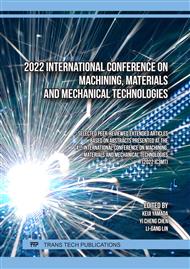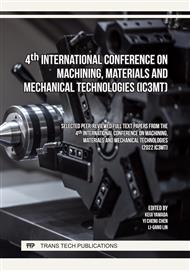p.3
p.11
p.19
p.25
p.33
p.41
p.51
p.59
Mechanical Design Using Open-Source Software (Eigenvalue Analysis by Parametric Study)
Abstract:
In this paper, to confirm the effectiveness and validity of the open-source software Salome–Meca, we constructed and operated Salome–Meca in a design/development environment and performed basic problem solving and eigenvalue analysis, as well as structural analysis. A parametric study was then carried out in collaboration with the open-source software Dakota. Analysis results of Salome–Meca matched both theoretical values and analysis results of ANSYS. Furthermore, the parameter research in Dakota confirmed the eigenvalues and deformation behavior of a pump column pipe as each variable in Salome–Meca was changed; moreover, Salome–Meca and Dakota executed a series of analysis operations normally and automatically. Therefore, Salome–Meca and Dakota are expected to optimize the shape of a structure while avoiding resonance points at natural frequencies.
Info:
Periodical:
Pages:
19-24
Citation:
Online since:
February 2024
Keywords:
Price:
Сopyright:
© 2024 Trans Tech Publications Ltd. All Rights Reserved
Share:
Citation:



